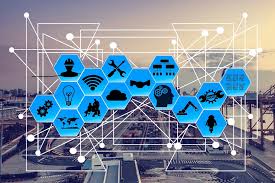info@gladsme.in
+91.8891968718
IoT and Hyperconnectivity: Redefining Our World Through Interconnected Devices
IoT and Hyperconnectivity: Redefining Our World Through Interconnected Devices

The Internet of Things (IoT) and hyperconnectivity are reshaping the way we live, work, and interact with our environment. This transformative trend involves connecting everyday objects to the internet, enabling them to collect and exchange data, automate tasks, and improve efficiency across various sectors. Let's delve into how IoT and hyperconnectivity are revolutionizing industries and enhancing our daily lives.
Understanding IoT
IoT refers to the network of interconnected devices embedded with sensors, software, and connectivity capabilities. These devices can range from smartphones and wearable gadgets to household appliances, vehicles, and industrial machinery. By enabling these objects to communicate and interact with each other autonomously, IoT unlocks a multitude of possibilities for automation, data analytics, and real-time decision-making.
Impact of Hyperconnectivity
Hyperconnectivity goes beyond IoT by describing the state where virtually everything and everyone is interconnected through various networks. This interconnectedness is facilitated by advancements in telecommunications, cloud computing, and data analytics, creating a seamless flow of information across devices and systems globally.
Applications of IoT and Hyperconnectivity
Smart Homes: IoT devices allow homeowners to control and automate lighting, heating, security systems, and appliances remotely through smartphone apps. This enhances convenience, energy efficiency, and home security.
Healthcare: In healthcare, IoT-enabled devices such as wearable fitness trackers and remote patient monitoring systems help healthcare providers track patient health metrics in real-time. This facilitates early intervention and personalized care.
Smart Cities: Cities are adopting IoT to optimize traffic management, reduce energy consumption, monitor environmental conditions, and improve public safety through connected sensors and smart infrastructure.
Manufacturing and Industry 4.0: Industrial IoT (IIoT) enhances manufacturing processes by enabling predictive maintenance, optimizing supply chain logistics, and improving overall operational efficiency through real-time data analytics.
Challenges and Considerations
While IoT and hyperconnectivity offer numerous benefits, they also pose challenges related to data security, privacy concerns, interoperability, and the ethical implications of widespread data collection and use. Addressing these issues is crucial to realizing the full potential of IoT while safeguarding user trust and data integrity.
The Future of IoT and Hyperconnectivity
Looking ahead, the evolution of IoT and hyperconnectivity promises further integration into our daily lives and industries. As technology advances, we can anticipate smarter and more interconnected ecosystems that enhance productivity, sustainability, and quality of life globally.
IoT and hyperconnectivity represent a paradigm shift in how we perceive and interact with technology. By connecting devices, systems, and people in unprecedented ways, these technologies are driving innovation across sectors and paving the way for a more interconnected and intelligent future.
Related Blogs

The Importance of Data Structures in Software Development
Read More...
Exploring Machine Learning Algorithms: A Beginner's Guide
Read More...
The Evolution of Programming Languages: From Assembly to Rust
Read More...
Understanding Big O Notation: A Guide for Developers
Read More...Subscribe for our Newsletter
Subscribe to elevate your software game! Stay updated on the latest trends, coding insights, and exclusive promotions with our newsletter.
